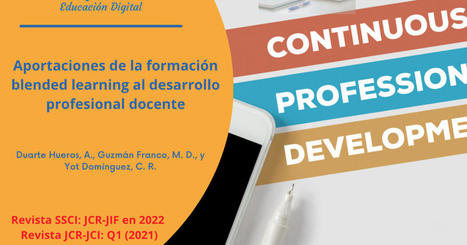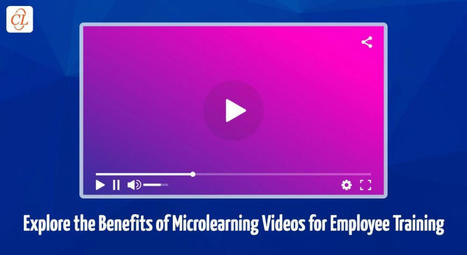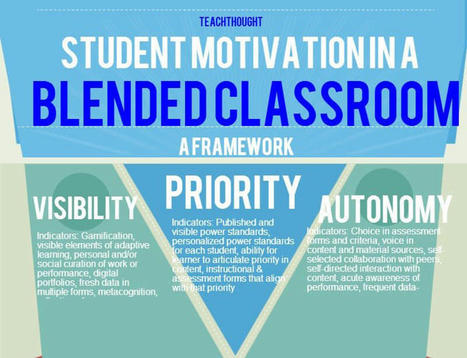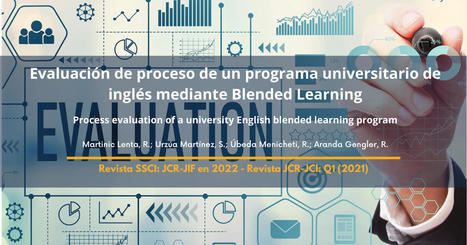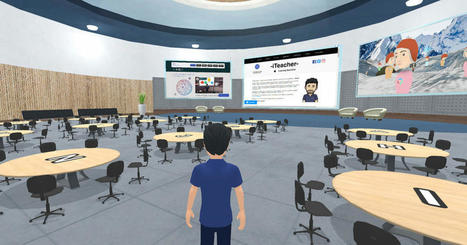 Your new post is loading...
 Your new post is loading...
Synchronous and Asynchronous eLearning are two of the most trending names in the e-learning sector. The global e-learning industry size was more than $315 billion in 2021 and is expected to grow at nearly 20% CAGR through 2028. This gives an estimation of the enormous e-learning industry as well as the high growth scope for the players in this field.
No matter whether you already have an e-learning business or have plans to start one, now is the right time to start one. While the outbreak of the COVID-19 pandemic has boosted the adoption and demand for e-learning, it has now become a common practice in the education sector. And with that synchronous and asynchronous e-learning both have come to the spotlight for a while now.
Via Edumorfosis, LGA, juandoming
In today’s blended learning environment, colleges and universities are constantly challenged to find a balanced and effective way of improving the assessment process while improving academic integrity.
Via EDTECH@UTRGV
If we take the same critical lens to in-person learning as we once did to online, rationalising our need for the former, how much better could we make our teaching?
Via Peter Mellow, LGA
Blended learning combines traditional classroom training with online learning formats to help us get the best of both worlds. It not only promises better learner satisfaction, but also boosts your return on investment (ROI). Read on to explore more.
Via EDTECH@UTRGV
In the pandemic many higher ed faculty, forced onto Zoom and other videoconferencing platforms, have continued teaching online just as they always did face to face, delivering lectures over streaming video as they did in person. Many are unaware that teaching online can actually open new possibilities to innovate their teaching practice.
In fact, many college instructors have been downright grumpy about having been thrown into a new teaching format.
Via EDTECH@UTRGV

|
Rescooped by
michel verstrepen
from Daily Magazine
March 4, 2022 10:57 AM
|
In response to the COVID-19 pandemic, Australian universities rapidly shifted to online models of learning and teaching. Some argue that this shift was long overdue. But even before the pandemic, online learning was rapidly growing in popularity in Australian tertiary education institutions. Recent data collected by the Australian Department of Education and Training show that the number of students enrolling in online and blended offerings in the higher education sector is rising faster than the number of students studying on campus. But should online and blended learning stay post-COVID? The answer is clear: YES!
Via Leona Ungerer, LGA, THE OFFICIAL ANDREASCY
Are you wanting to implement a blended learning model but aren’t sure exactly what to do? Learn some tips for getting started!
Via Yashy Tohsaku, juandoming

|
Rescooped by
michel verstrepen
from Educational Technology News
January 19, 2022 11:33 PM
|
Is online learning as good as classroom learning? Well, we've got all the information to help you understand which one goes well with your needs.
Via EDTECH@UTRGV

|
Rescooped by
michel verstrepen
from Educational Technology News
January 15, 2022 12:57 AM
|
Online training was in high demand although being assumed as a temporary approach to the ongoing crisis. Rather than just adapting, a roadmap for online workplace training, now, is a must.
Via EDTECH@UTRGV
The COVID-19 crisis shined a spotlight on the digital divide, highlighting vast disparities in access to devices and the internet. At the end of the 2020 school year, Common Sense Media and Boston Consulting Group reported that 15-16 million students lacked sufficient internet access or devices to participate in remote or online learning. That number represented approximately 30 percent of all students enrolled in public education. As districts prepared for the 2020-21 school year, they raced to bring devices and connectivity to students, closing approximately 20-40 percent of that gap; and yet, up to 12 million students remained disconnected.
Via Inovação Educacional, juandoming
The pandemic has shattered antiquated assumptions about work design. Executives urgently need to banish remaining myths about hybrid work models and redesign work around a human-centric model to keep and secure critical digital-era talent and deliver business outcomes. Download our research to dispel hybrid workplace myths and learn realities like:
- If you insist on a return to fully onsite work, you risk losing talent.
- Human-centric design, featuring flexibility and empathy, is what drives productivity and engagement.
- Innovation is best driven by intentional collaboration, not in-person serendipity.
- There are ways to offer employees flexibility, even when location isn’t flexible
Via Edumorfosis, juandoming

|
Rescooped by
michel verstrepen
from Educación a Distancia y TIC
December 26, 2021 5:05 PM
|
DESCARGAR RESUMEN HTML Multilingüe PDF EPUB INFOGRAFÍA
Via LGA

|
Rescooped by
michel verstrepen
from Educational Technology News
December 2, 2021 4:20 PM
|
How can a blended learning approach help you achieve your goals and improve team performance? Learn how AshCom tackles challenges with holistic blended training.
Via EDTECH@UTRGV
|
An accounting professor shares how best practices from online pedagogy have helped her create a blended learning environment that supports student success.
Via EDTECH@UTRGV
Are you looking to enhance your employees’ learning experiences? Discover how you can leverage the power of microlearning videos for all your corporate training needs.
Via EDTECH@UTRGV
What makes blended learning vital for corporate training? For starters, it offers learners flexibility of learning and saves training costs for organizations. This video reveals the top five advantages of blended learning for corporate training.
Via EDTECH@UTRGV
Revista Iberoamericana de Educación a Distancia”>
Via LGA
Just as “hybrid jobs” have become “jobs,” the old definition of “hybrid learning” that mixes in-person and online experiences is fast becoming just “learning.” It’s incumbent on employers, training providers and learners themselves to ensure that as we navigate that shift, we’re building a more meaningful and productive learning experience in the process.
Via Patricia Hidalgo , LGA

|
Rescooped by
michel verstrepen
from Educación a Distancia y TIC
February 2, 2022 2:04 PM
|
The benefits of blended learning include allowing students access to materials from anywhere at any time while enjoying face-to-face support.
Via Vladimir Kukharenko, juandoming, LGA

|
Rescooped by
michel verstrepen
from Educación a Distancia y TIC
January 15, 2022 12:02 PM
|
DESCARGAR RESUMEN HTML Multilingüe PDF EPUB INFOGRAFÍA
Via LGA

|
Rescooped by
michel verstrepen
from Educación a Distancia y TIC
January 15, 2022 12:57 AM
|
DESCARGAR RESUMEN HTML Multilingüe PDF EPUB INFOGRAFÍA
Via LGA
My vision for EDU 3.0 includes the implementation of virtual environments in the form of ‘hybrid classrooms’. A virtual class running parallel to the bricks and mortar space. A place where the online enhances the traditional. They don’t replace each other, they complement one another. A virtual world would allow remote learners to join their peers, see guest teachers joining us. We will have linked online learning platforms. Themed virtual spaces that allow experts from global locations to join classes with the click of a button. All great in theory right?
Via Edumorfosis, juandoming

|
Rescooped by
michel verstrepen
from Educación a Distancia y TIC
December 28, 2021 1:12 PM
|
What is blended learning and how it can help you bridge knowledge and performance gaps among your remote workforce?
Via LGA

|
Rescooped by
michel verstrepen
from Educational Technology News
December 13, 2021 9:02 PM
|
Can the best blended learning solutions help you reduce L&D expenses and foster hands-on experience? Discover how fictional company, AshCom, uses blended learning to boost performance.
Via EDTECH@UTRGV
|



 Your new post is loading...
Your new post is loading...

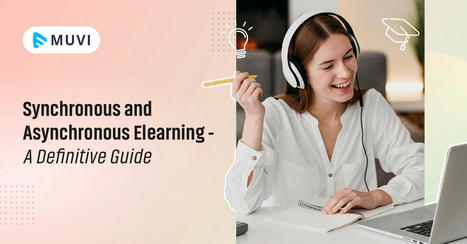













![[PDF] Redesigning Work for a Hybrid Future | blended learning | Scoop.it](https://img.scoop.it/PvIZudKh1KDkya-EZMUn_Dl72eJkfbmt4t8yenImKBVvK0kTmF0xjctABnaLJIm9)
